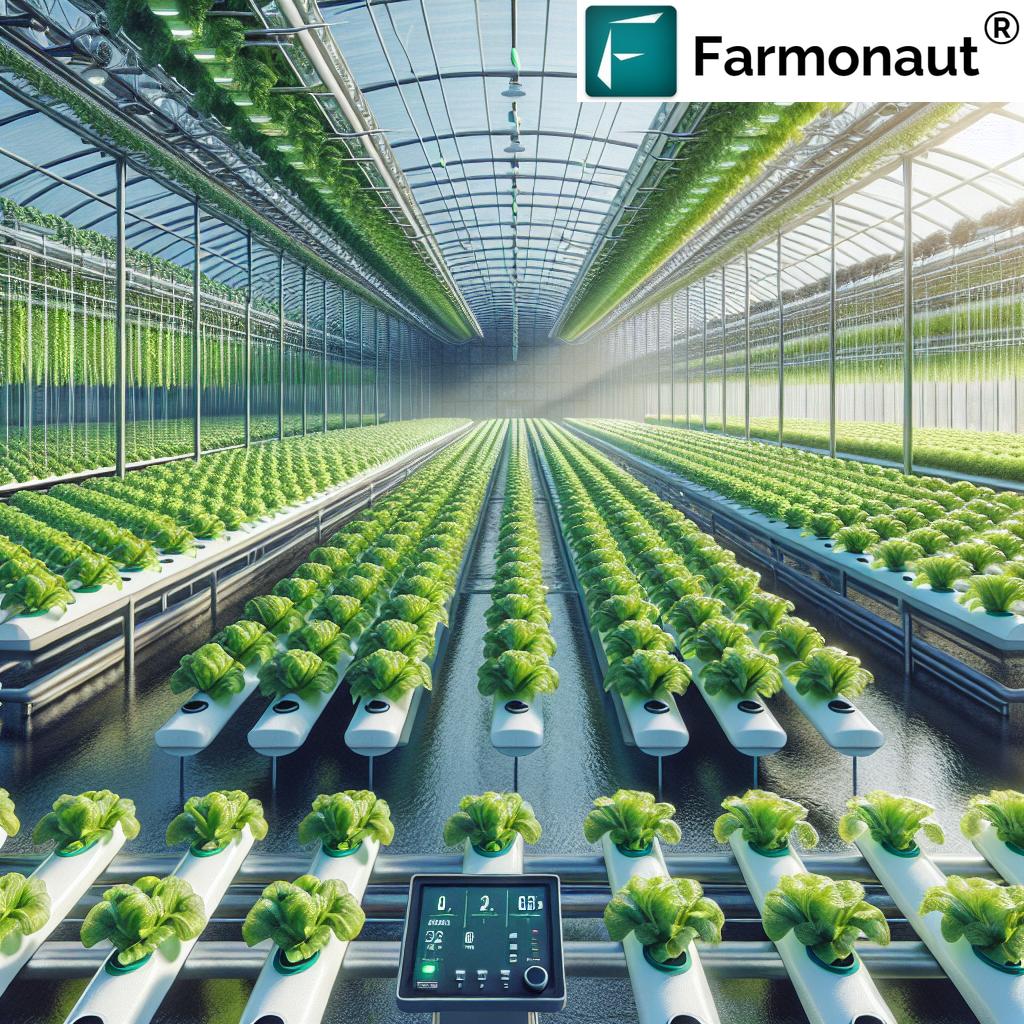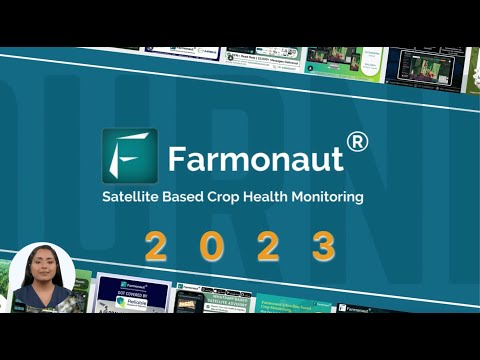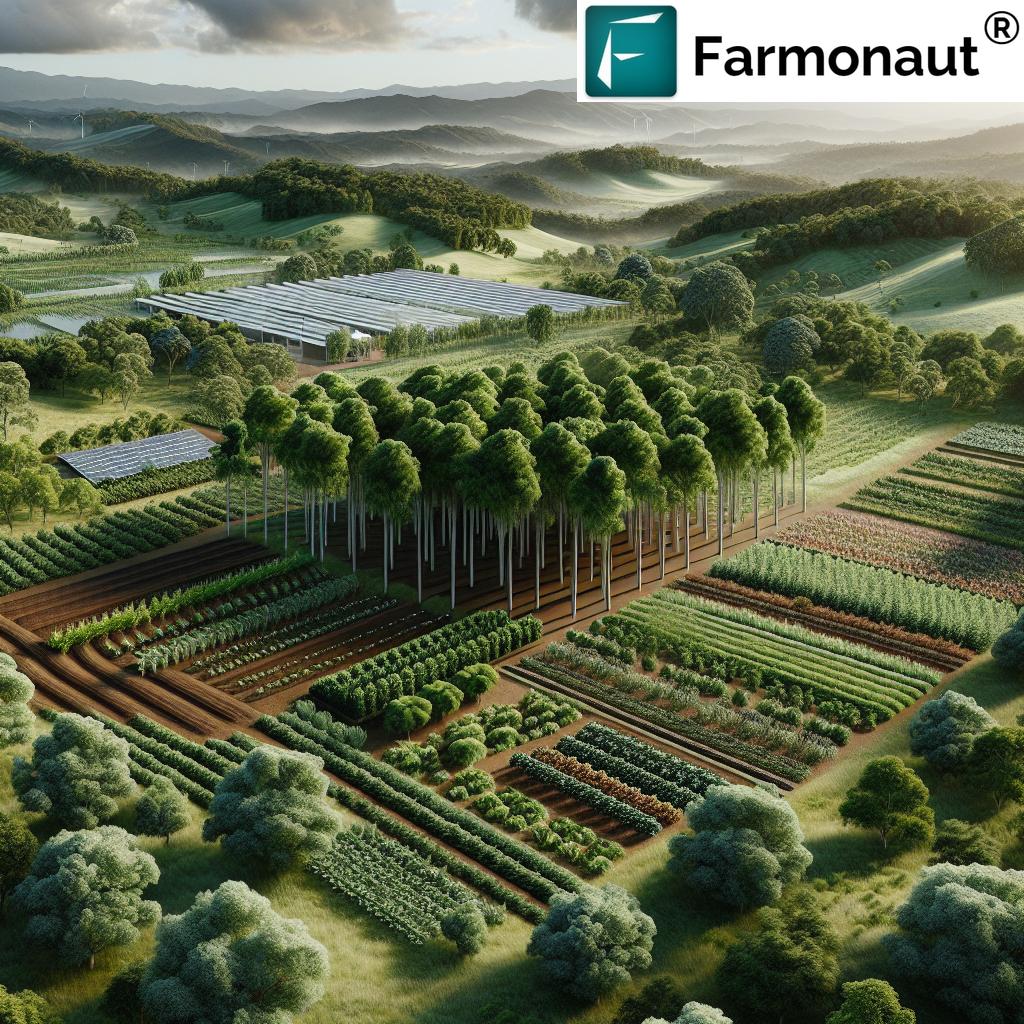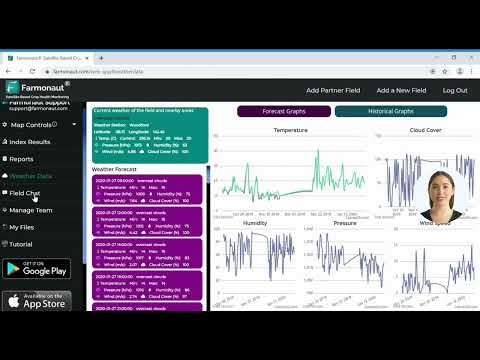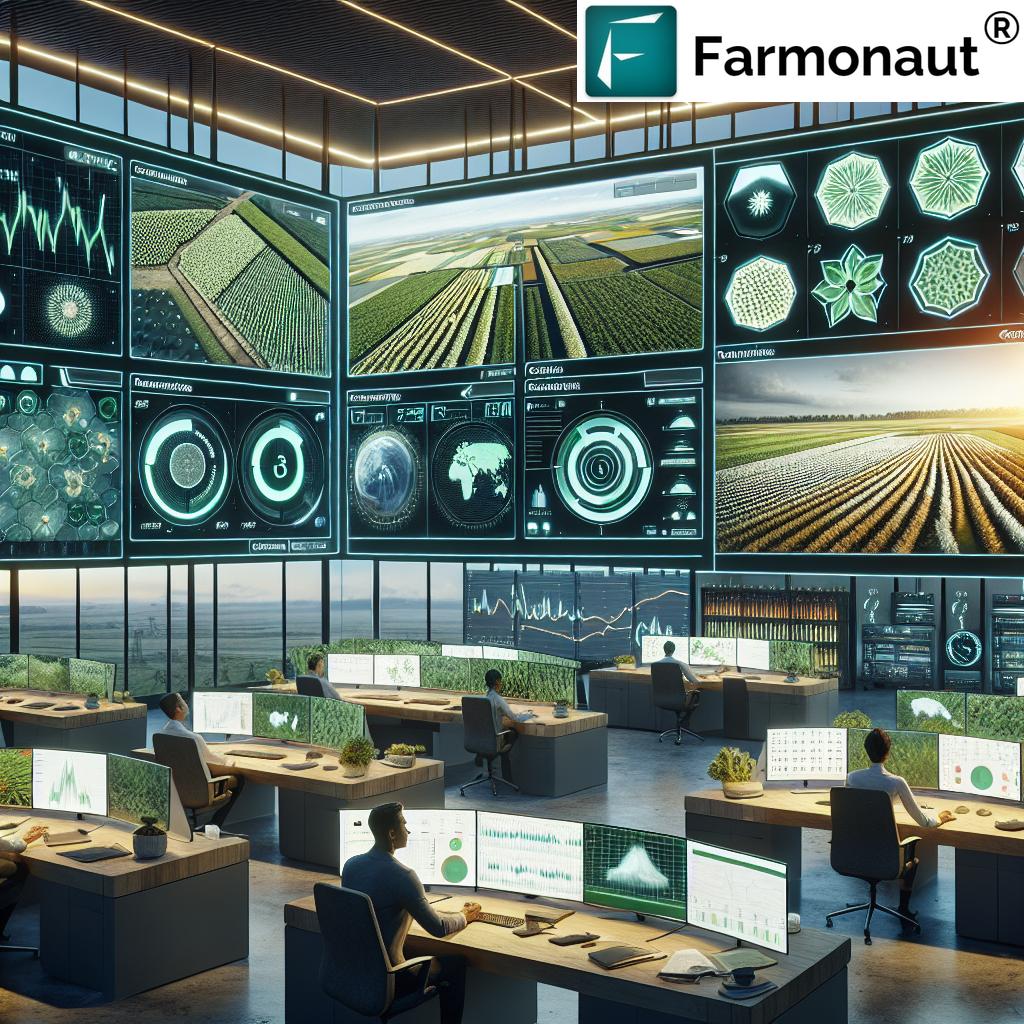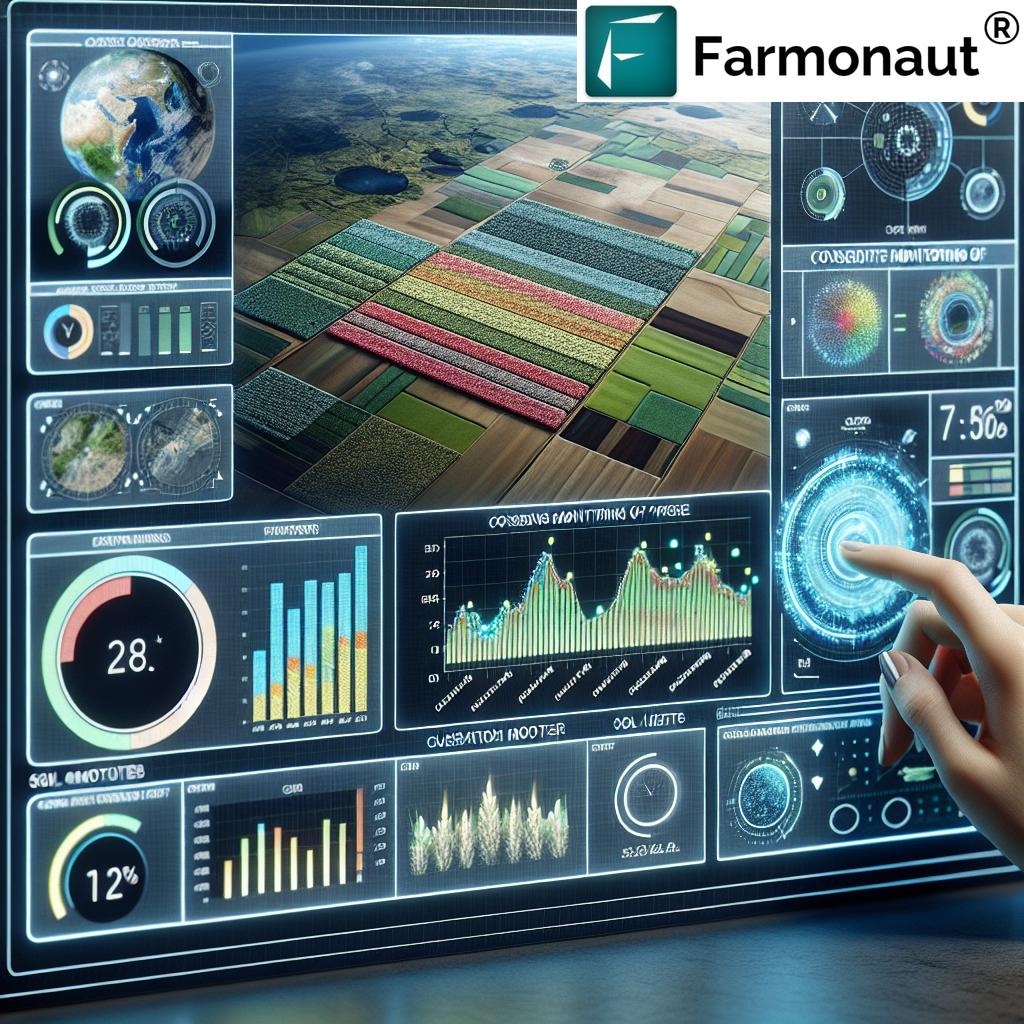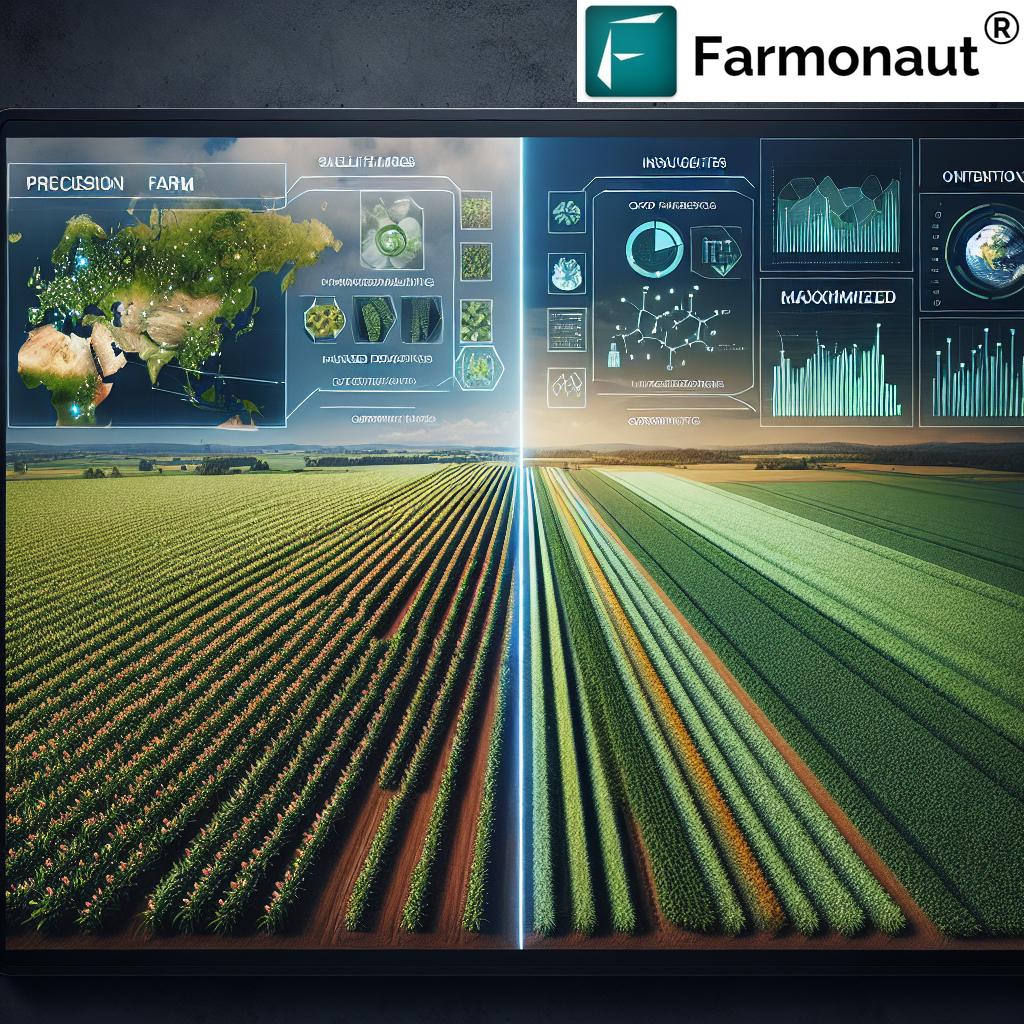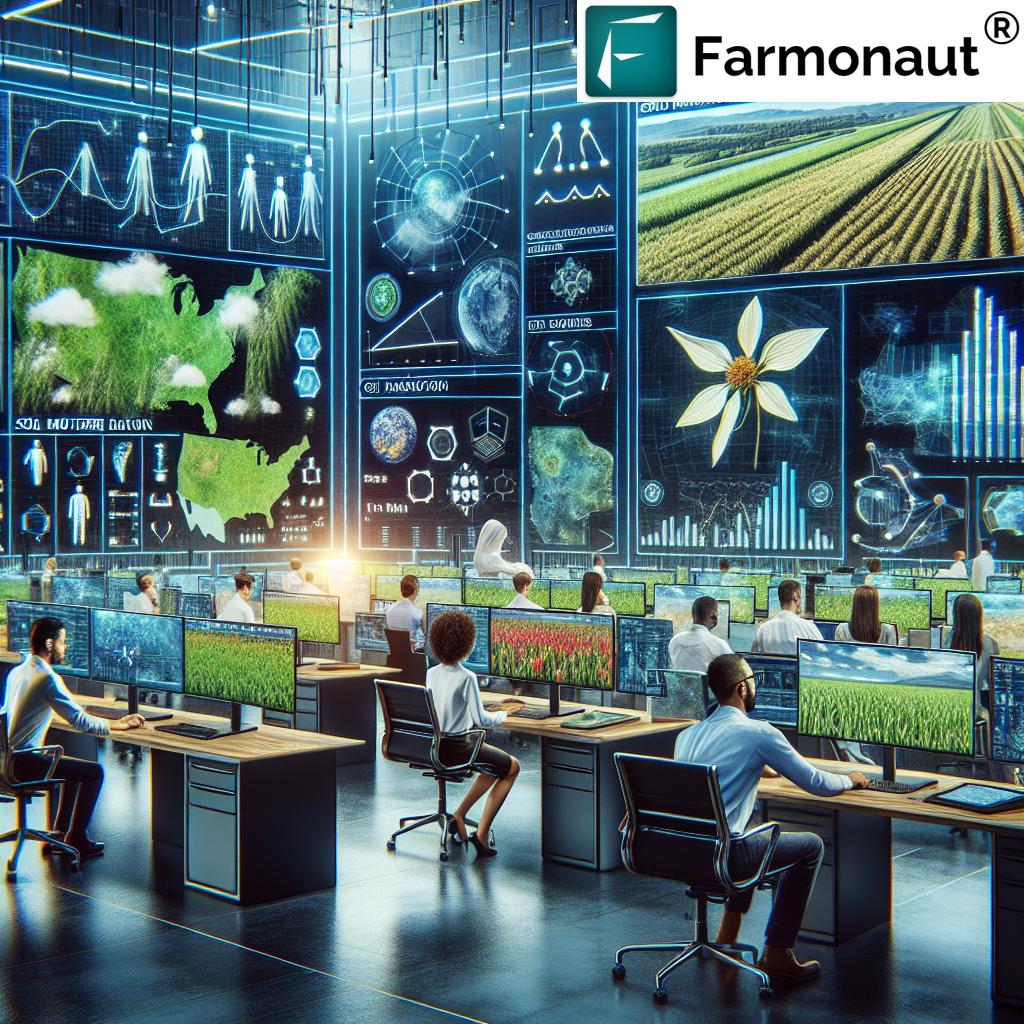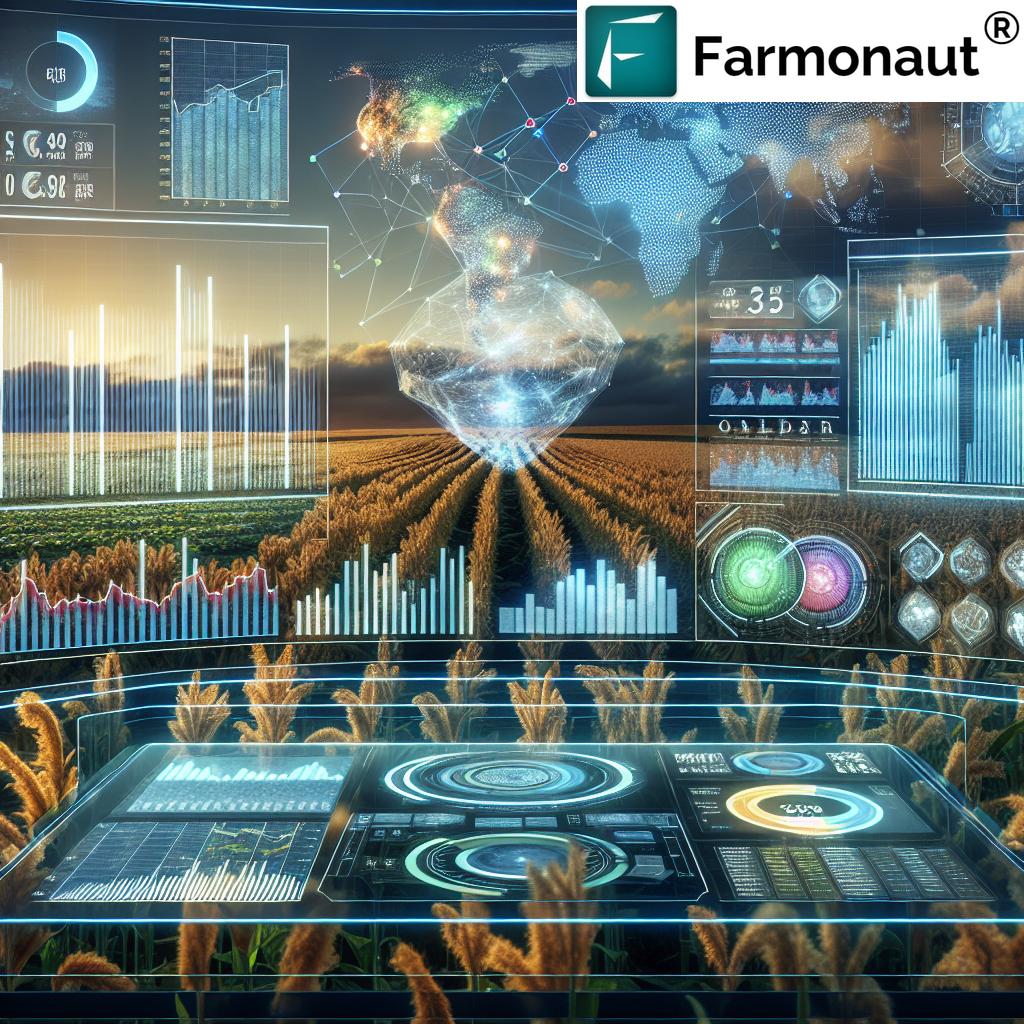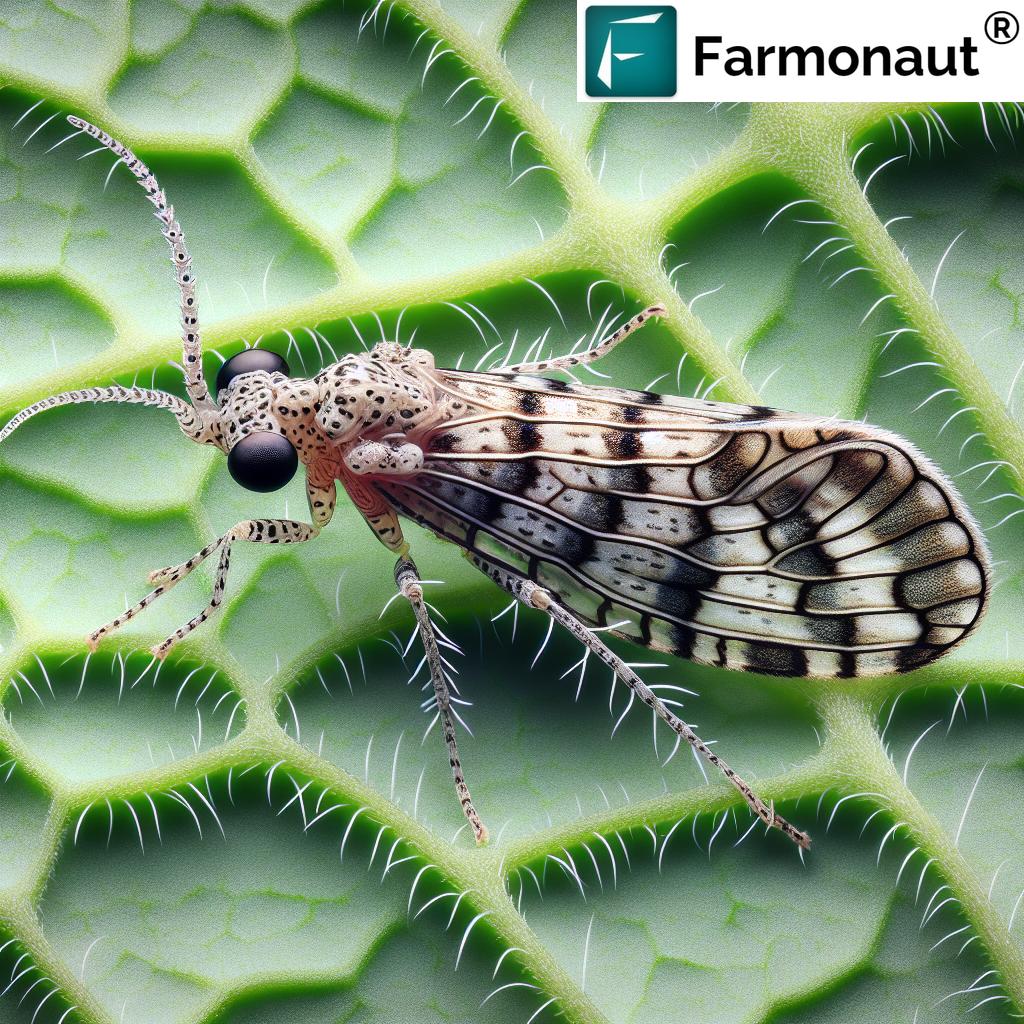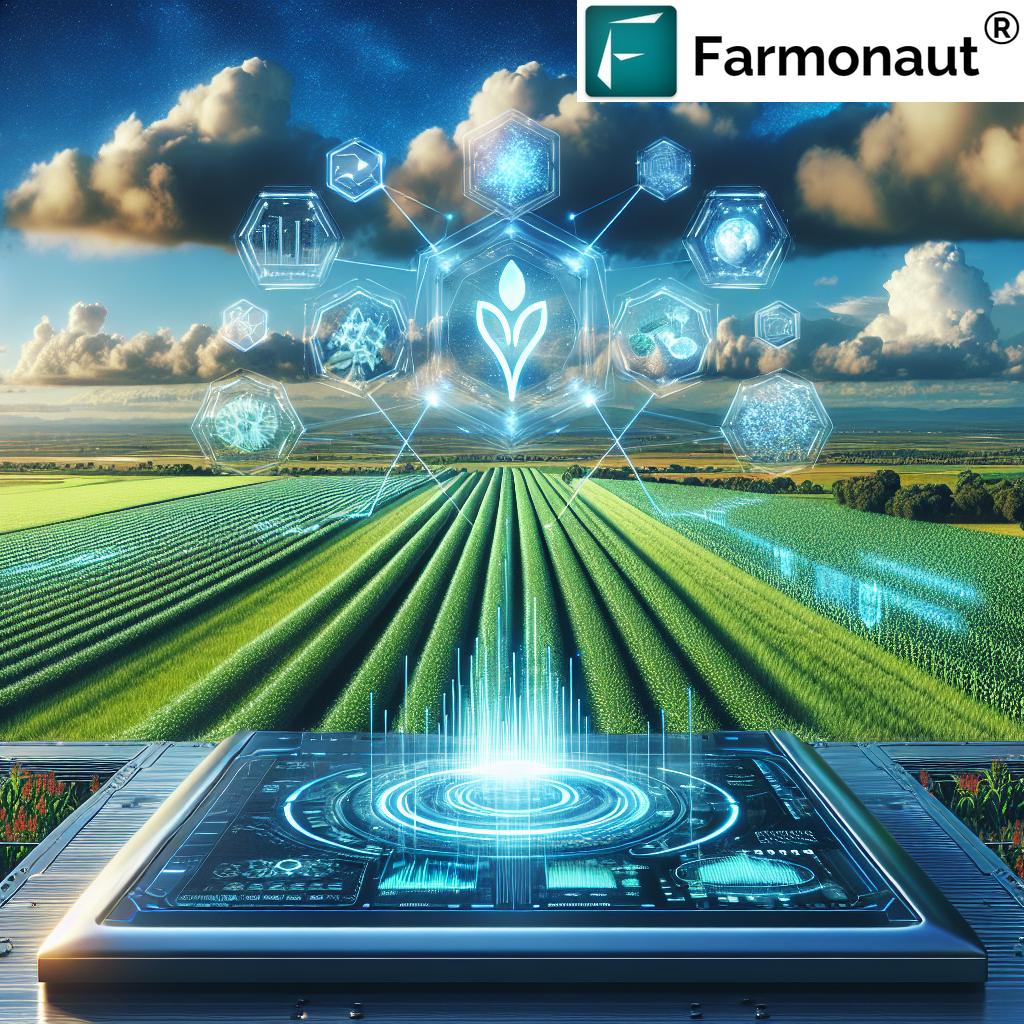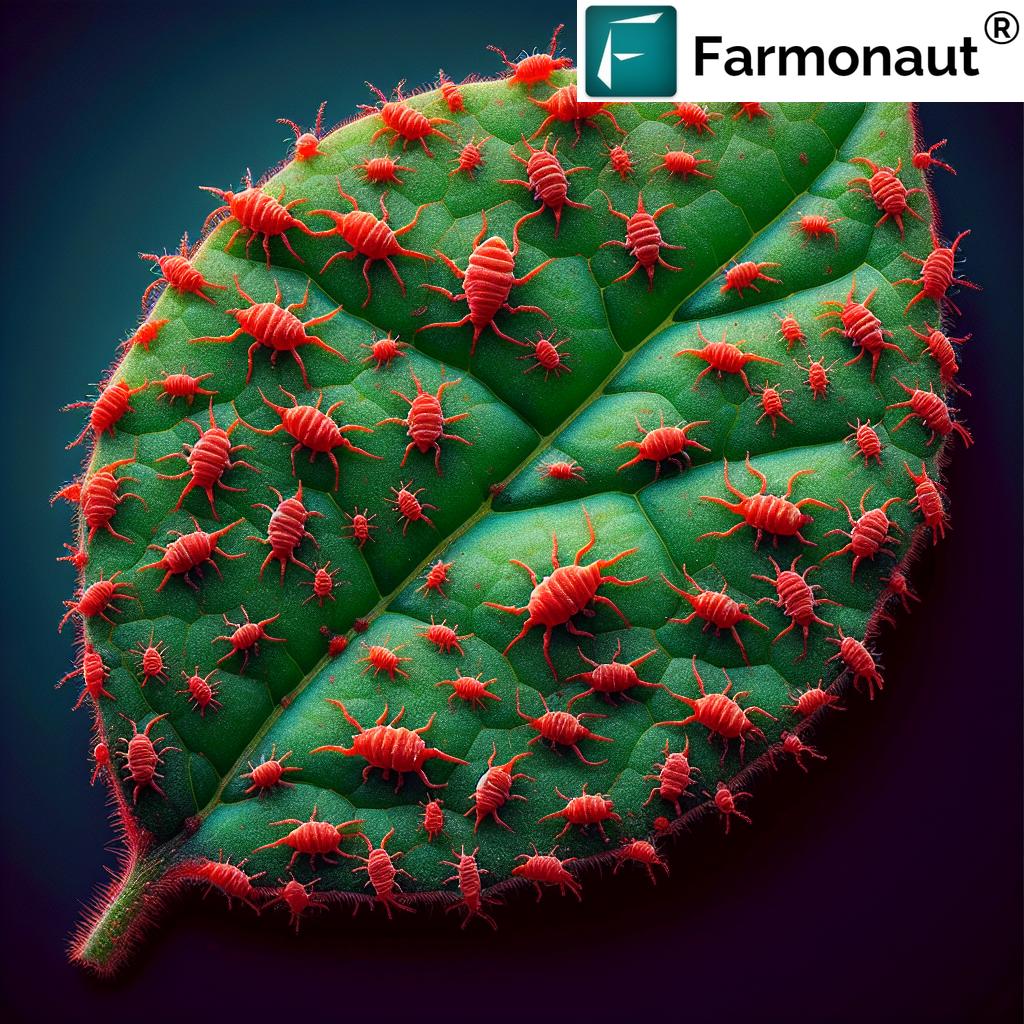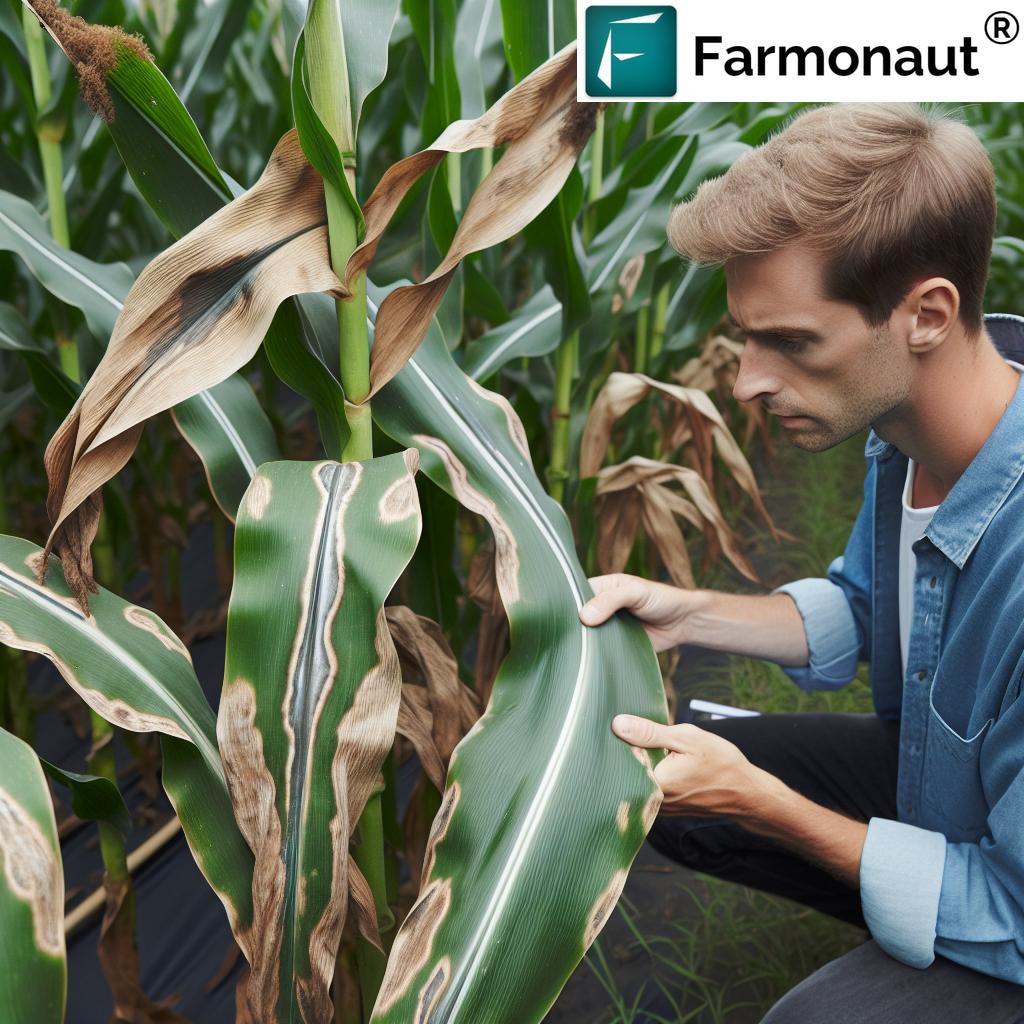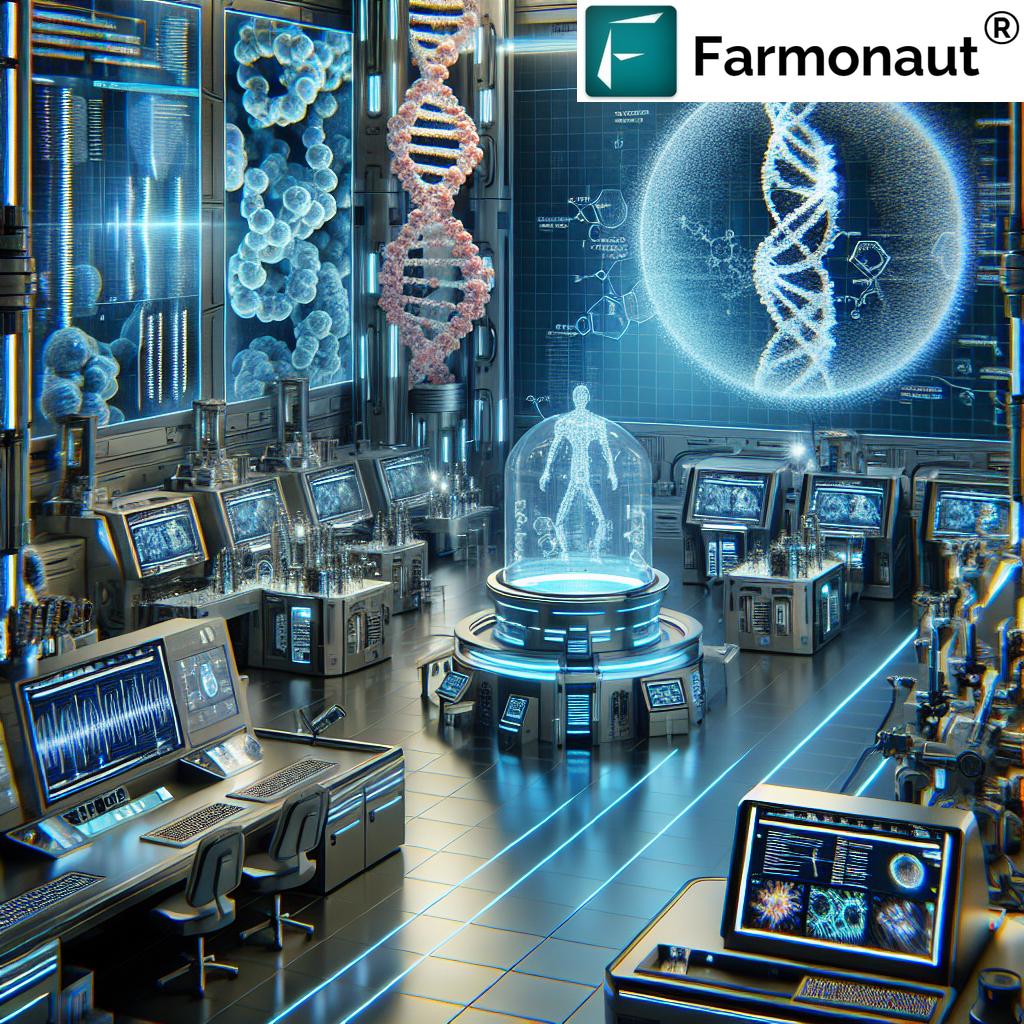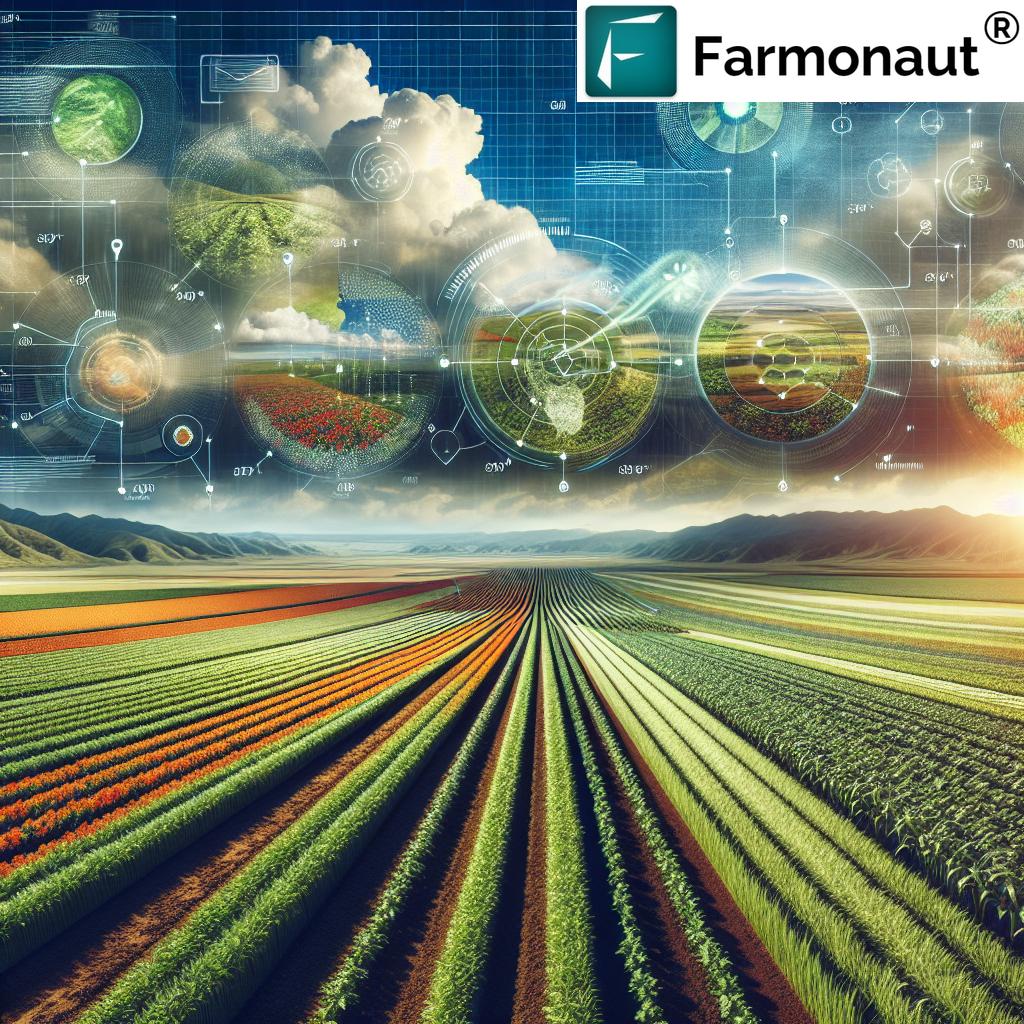Innovative Farming: 15 Shocking Secrets Revolutionizing Agri
“AI-driven farming can boost crop yields by up to 30% compared to traditional methods.”
Summary: The Revolution in Innovative Farming Practices
In recent years, innovative farming practices have emerged as powerful drivers reshaping the future of agriculture, forestry, and food production. As we collectively face challenges ranging from climate change and resource scarcity to the pressing need for sustainable intensification of farm yields, adopting smarter solutions isn’t merely beneficial—it’s essential.
Through controlled environment agriculture (CEA), AI integration, advanced sensor networks, and emerging agroforestry techniques, we are witnessing a paradigm shift that enhances soil health, optimizes water usage, boosts crop yields, and fosters biodiversity. The rise of hydroponics and aquaponics, smart systems, renewable energy inputs, and data-driven management strategies provide us with the tools to meet growing global food demand while also reducing the environmental impact of traditional practices.
This comprehensive guide unpacks the 15 most innovative and future-proof techniques transforming our fields, cities, and rural landscapes, explaining how each is contributing to the next green revolution. Alongside, we showcase how technology leaders such as Farmonaut are making these advancements accessible and actionable for all growers—large, small, and everywhere in between.
15 Shocking Secrets: Innovative Farming Practices Revolutionizing Agriculture
1. Controlled-Environment Agriculture (CEA): Mastering Growth Conditions
If there’s a cornerstone to innovative farming, it’s Controlled-Environment Agriculture (CEA). In CEA, crops are grown inside greenhouses or indoor vertical setups where we manage variables such as temperature, humidity, light cycles, and nutrient levels with surgical precision.
This approach, including hydroponics, aeroponics, and aquaponics, detaches plant roots from unpredictable field conditions, allowing us to achieve year-round production, reduce water usage by up to 90%, and eliminate many chemical pesticides—directly enhancing yield and soil health.
CEA also enables urban agriculture in cities like New York, Tokyo, and Delhi where traditional open-land agricultural areas are scarce or unsuitable due to adverse climates.
- Optimizes resource management (light, heat, water, nutrients)
- Protects plants against pest attacks and extreme weather
- Reduces emissions by supporting hyperlocal food systems
Focus Keyword: controlled environment agriculture
2. Vertical Farming Systems: Growing Upwards, Feeding Cities
By stacking crops in vertical layers—sometimes dozens of stories high—we multiply real estate potential and drastically increase yields per square foot. Vertical farming systems typically combine LED light technology, nutrient-rich nebulized water, and AI-powered environmental control to nurture precisely what each plant craves.
- Ideal for urban environments, reducing farm-to-table transport emissions
- Allows maximal use of limited land, especially in high-density cities
- Enables year-round production regardless of external climate
Focus Keyword: vertical farming systems
3. Agroforestry Techniques: Blending Trees with Fields
Agroforestry integrates trees and shrubs alongside crops and/or livestock to create resilient agricultural landscapes. This method boosts soil fertility through nitrogen-fixing species, prevents erosion, and offers shade that moderates temperature.
Additionally, by increasing biodiversity and carbon sequestration, agroforestry helps mitigate climate change while providing income diversification via timber, fruit, or nut harvests.
Well-managed agroforestry systems also enhance resilience to droughts and pests.
- Promotes natural pest resistance and pollinator activity
- Improves soil health and water retention
- Enhances carbon storage in biomass and soil
Focus Keyword: agroforestry techniques
4. Hydroponics and Aquaponics: Soil-less Sustainable Systems
Hydroponics is the science of growing plants directly in nutrient-enriched water, while aquaponics creates a closed loop by combining fish farming with hydroponic crop production. Fish excretions provide vital nutrients for plant growth, which in turn clean the water and maintain a healthy aquatic environment.
- Saves up to 90%
water usage compared to soil-based systems - Yields both fish and plant produce, delivering multiple income streams
- Is highly effective in arid or degraded land regions where soil productivity is limited
Focus Keyword: hydroponics and aquaponics
5. Smart Greenhouses Technology: AI-Powered Agriculture
Welcome to the new era of smart greenhouses, where sensors, machine learning algorithms, and automation combine to maintain optimal growing conditions 24/7.
These structures leverage solar-powered panels, advanced climate control, and remote monitoring—minimizing human error and resource waste.
- Enable precise control over parameters like humidity, temperature, and light
- Boost energy efficiency by integrating renewable energy sources
- Increase production reliability in extreme or unpredictable weather
Focus Keyword: smart greenhouses technology
6. Drones in Agriculture: Eyes in the Field, Wings in the Sky
Drones or UAVs (Unmanned Aerial Vehicles) have emerged as game-changing tools for monitoring crop health, applying inputs, and even mapping soil variability. With AI-powered image analysis, drones pinpoint areas needing irrigation, fertilizers, or pest management—reducing blanket applications and protecting the environment.
- Enhances data collection over large areas in minutes
- Reduces risk to workers handling chemicals or monitoring hazardous zones
- Delivers insights for improved decision-making in real time
Focus Keyword: drones in agriculture
7. Soil Moisture Sensors: Ensuring Every Drop Counts
Soil moisture sensors underpin modern irrigation strategies by providing real-time data on water content at different depths. These sensors fine-tune irrigation scheduling, averting plant stress and nutrient leaching that harm soil fertility and the broader environment.
- Facilitate precision irrigation for maximal growth and savings
- Help farmers respond to weather changes and reduce water waste
- Integrated in platforms like Farmonaut’s Large Scale Farm Management Solutions, delivering efficiency at scale.
Focus Keyword: soil moisture sensors
“Smart agriculture systems can reduce water usage by nearly 50% through precision irrigation techniques.”
8. Integrated Pest Management (IPM): Smarter, Safer Crop Protection
Integrated Pest Management (IPM) combines crop rotation, biological controls, and targeted chemical applications to minimize pest resistance and chemical usage. IPM not only safeguards our food and the environment but also ensures that harmful pesticides are used as a last resort.
- Reduces reliance on synthetic chemicals
- Encourages natural enemies and beneficial organisms
- Promotes sustainable agriculture and crop resiliency
Focus Keyword: integrated pest management
9. Biochar and Carbon Farming: Cleaning Our Carbon Footprint
Carbon farming centers on carbon sequestration, empowering farmers to stabilize carbon within soils and biomass. Biochar, created by slow-burning organic matter (pyrolysis), is mixed into soil to lock away carbon for centuries—while also improving soil structure, water retention, and nutrient habitats.
- Biochar increases crop yields in degraded soils by 10-40%
- Helps reduce greenhouse gas emissions
- Supports sustainable food production on marginal lands
- Farmonaut’s Carbon Footprinting Solution provides real-time emissions data, guiding sustainable farm management.
Focus Keyword: biochar and carbon farming
10. Regenerative Agriculture Methods: Healing the Land, Harvesting Resilience
Regenerative agriculture methods are built on principles like cover cropping, animal integration, minimum soil disturbance, and continuous crop diversity. By fostering soil health, boosting biodiversity, and increasing carbon retention, we build agricultural systems that are not only productive, but also more resilient in the face of climate shocks.
- Reverses soil degradation and improves water infiltration
- Boosts wildlife, pollinators, and beneficial microorganisms
- Delivers sustained productivity and sustainable incomes
- Farmonaut’s Crop Plantation and Forest Advisory provides technology-driven guidance to accelerate regenerative gains.
Focus Keyword: regenerative agriculture methods
11. AI in Agriculture: Data Science Meets the Field
By harnessing artificial intelligence and data science, we’re analyzing massive datasets—from in-field sensors and satellites to weather trends and market analysis—to predict issues, optimize inputs, and increase efficiency. AI-driven facial recognition is even used to track animal health.
Farmonaut’s Jeevn AI Advisory System delivers real-time, customized advice to maximize resource efficiency, yields, and resilience—proving that the future of management is digital.
- Enables precision farming through real-time recommendations
- Helps mitigate climate risks and optimize irrigation and nutrient delivery
- Enhances crop health monitoring for early problem detection
- Explore Farmonaut’s AI-based Solutions for actionable, data-driven advisory.
Focus Keyword: ai in agriculture
12. Renewable Energy Integration: Clean Energy for Smarter Farms
From solar panels to wind turbines and biomass reactors, today’s farms harness renewable energy to reduce emissions, lower operating costs, and power everything from irrigation pumps to smart greenhouses.
For instance, solar-powered panels now drive climate control in greenhouses and electrify agricultural machinery sustainably.
- Cuts carbon emissions and preserves the environment
- Reduces farm dependence on fossil fuels
- Offers additional revenue if excess energy is sold to the grid
Focus Keyword: renewable energy integration
13. Cover Cropping & No-Till Farming: Nature’s Armor for Soil
Cover cropping involves planting protective crops (like legumes and grasses) between commercial harvests, preventing erosion, enriching soils, and promoting biodiversity.
No-till farming skips mechanical disturbance, preserving soil structure and moisture while slashing machine-based emissions.
- Mitigates soil erosion and carbon loss
- Improves water retention and fertility
- Boosts sustainability and system resilience
Focus Keyword: cover cropping, no-till farming
14. Microalgae Cultivation: Tiny Organisms, Big Impact
Microalgae promise astonishing protein yields per hectare—up to 50x more than soybeans—while using a fraction of the water. Grown in photobioreactors or open ponds (often on degraded land), microalgae can be processed into food, feed, biofertilizers, and high-value chemicals.
- Does not compete with conventional food crops for land
- Assists wastewater treatment and recovers valuable nutrients
- Promotes a closed-loop, sustainable food system
Focus Keyword: microalgae cultivation
15. CRISPR and Sustainable Genetic Improvement: Precise, Efficient, Controversy-Free
Gene editing tools like CRISPR-Cas9 bring new possibilities by making specific, targeted changes to plant genomes—such as increasing drought resistance or nutrient content—without introducing foreign DNA. This accelerates breeding cycles and delivers natural improvements.
- Enhances crops’ resilience to disease and climate change
- Reduces chemical input needs and environmental impact
- Improves soil and food nutrition through improved crop varieties
Focus Keyword: CRISPR, sustainable genetic improvement
16. Farmer-Managed Natural Regeneration (FMNR): Restoring Degraded Landscapes
FMNR involves strategic encouragement of natural regrowth from dormant tree/shrub stumps or seeds, harnessing nature’s power on degraded land. This technique boosts soil fertility, increases rainwater retention, and brings back ecosystem services in just a few years—proven across dryland regions.
- Low-cost, scalable environmental restoration
- Restores natural biodiversity and system resilience
- Improves income and food security for rural farmers
Focus Keyword: FMNR, farmer-managed natural regeneration
Farmonaut: Leading with Precision, Sustainability, and Data-Driven Farming
At Farmonaut, we believe that every farmer, from local growers to global agri-enterprises, should have access to affordable, high-impact technology. Our solutions seamlessly integrate satellite imagery, artificial intelligence, machine learning, and blockchain to advance precision agriculture and sustainable resource management.
Here’s how we support the global shift towards smarter, greener, and more profitable farming systems:
- Satellite-Based Crop Health Monitoring: Receive multispectral insights into soil moisture, plant health (NDVI), and resource application—boosting productivity, optimizing irrigation, and reducing resource waste.
- AI-Driven Advisory (Jeevn AI): Leverage real-time, personalized guidance on crop management, weather risk, and plant health. Enhance yields and reduce losses with each season.
-
Blockchain-Powered Traceability: With transparent product history protected by tamperproof records, ensure food integrity and build marketplace trust.
Learn more about Farmonaut’s Blockchain-Based Product Traceability. -
Fleet and Resource Management: Streamline logistics, lower operational costs, and enhance safety using our robust vehicle and fleet tracking solutions.
Discover how Farmonaut transforms logistics: Fleet Management Tools. -
Carbon Footprinting: Track, analyze, and reduce your farm’s carbon emissions with our real-time monitoring for greater sustainability.
Dive deeper into Farmonaut’s Carbon Footprinting Solution. -
Access to Financing: Enable satellite-verified claims for crop loans and insurance, reducing fraud and making finance accessible.
Simplify loan and insurance with Farmonaut’s Crop Loan & Insurance Platform.
Our data-driven approach supports farmers from field to fork, accelerating the adoption of innovative farming practices—all without expensive hardware. Accessible via mobile, web, and robust API integration, our solutions empower all stakeholders across the agri-value chain.
Integrate Farmonaut’s satellite and weather data into your agri-systems—visit our Farmonaut API page.
For developers: check out our API Developer Documentation.
Affordable Precision Agriculture: Farmonaut Subscriptions
Choose the plan that fits your needs:
Comparison Table of Innovative Farming Practices and Their Impact
| Farming Practice/Innovation | Primary Benefit | Estimated Yield Increase (%) | Soil Health Impact (Estimated Rating) |
Sustainability Level (Estimated Rating) |
Example Application |
|---|---|---|---|---|---|
| Controlled-Environment Agriculture (CEA) | Year-round production, optimal resource control | +20–30% | ⭐⭐⭐⭐⭐ | ⭐⭐⭐⭐ | Urban indoor leafy greens, tomatoes |
| Vertical Farming Systems | Maximal space efficiency, localized food | +25–35% | ⭐⭐⭐⭐ | ⭐⭐⭐⭐⭐ | Skyfarms in Singapore, New York |
| Agroforestry Techniques | Biodiversity, soil enrichment, carbon storage | +10–15% | ⭐⭐⭐⭐⭐ | ⭐⭐⭐⭐ | Coffee intercropped with trees in Karnataka |
| Hydroponics and Aquaponics | Water conservation, soil-less growing | +20–50% | ⭐⭐⭐⭐ | ⭐⭐⭐⭐⭐ | Leafy greens, tilapia co-production |
| Smart Greenhouses Technology | Climate resilience, precision input use | +15–30% | ⭐⭐⭐⭐ | ⭐⭐⭐⭐ | Tomato and cucumber high-tech cultivation |
| Drones in Agriculture | Efficient monitoring, targeted spraying | +10–20% | ⭐⭐⭐ | ⭐⭐⭐⭐ | Rice field aerial NDVI scans, India |
| Soil Moisture Sensors & Smart Irrigation | Water savings, reduced stress | +7–12% | ⭐⭐⭐⭐⭐ | ⭐⭐⭐⭐ | Drip-irrigation for grapes, Maharashtra |
| Integrated Pest Management (IPM) | Pest reduction, healthier crops | +5–12% | ⭐⭐⭐⭐ | ⭐⭐⭐⭐⭐ | Biocontrol in rice and vegetable fields |
| Biochar & Carbon Farming | Soil enrichment, climate mitigation | +10–40% | ⭐⭐⭐⭐⭐ | ⭐⭐⭐⭐⭐ | Degraded land turnaround, carbon offsetting |
| Regenerative Agriculture | Enhanced resilience, improved fertility | +10–25% | ⭐⭐⭐⭐⭐ | ⭐⭐⭐⭐ | Cover cropping, multi-species rotations |
| AI & Data Science in Agriculture | Data-driven optimization, risk reduction | +20–30% | ⭐⭐⭐⭐ | ⭐⭐⭐⭐⭐ | Automated crop advisory with Farmonaut |
| Renewable Energy Integration | Lower emissions, reduced costs | +5–10% | ⭐⭐⭐⭐ | ⭐⭐⭐⭐⭐ | Solar-powered greenhouses, India/US |
| Cover Cropping & No-Till | Soil conservation, system resilience | +5–15% | ⭐⭐⭐⭐⭐ | ⭐⭐⭐⭐⭐ | Soy/wheat with off-season cover, Midwest USA |
| Microalgae Cultivation | High protein yield, water efficiency | +30–100% (protein/ha) | ⭐⭐⭐ | ⭐⭐⭐⭐⭐ | Biofertilizers, animal/fish feed supplements |
| CRISPR & Genetic Improvement | Precision breeding, resilience | +10–20% | ⭐⭐⭐⭐ | ⭐⭐⭐⭐ | Drought-resistant maize, India/Africa |
| FMNR | Rapid ecological restoration, farmer-driven | +6–12% | ⭐⭐⭐⭐⭐ | ⭐⭐⭐⭐⭐ | Drylands in Niger, Rajasthan |
Farmonaut Apps, API, and Easy Access Tools
Ready to modernize your farm management with satellite-based crop health, AI insights, and data-powered productivity? Farmonaut’s suite is designed to be as flexible as your field.
Access intelligence anytime, anywhere—from browser, Android, or iOS devices.
Want to integrate deep agri intelligence into your platform? Explore the Farmonaut Satellite & Weather API for real-time, field-precise data.
Developers are welcome—read our API Docs and start building next-generation agri systems today.
FAQ: Innovative Farming & Precision Agriculture
What is controlled-environment agriculture and how does it enhance crop yields?
Controlled-environment agriculture (CEA) refers to growing crops in regulated indoor settings—such as greenhouses—where temperature, light, humidity, and nutrition are precisely managed. This control eliminates crop stress from adverse weather, improves nutrient utilization, and allows year-round cropping, resulting in significantly higher yields.
How do smart farming systems improve water and resource efficiency?
Smart farms leverage technologies like soil moisture sensors, AI, and drones to deliver precise amounts of water and inputs only when and where needed. This sharply reduces waste, lowers costs, and ensures crops get optimal conditions for healthy growth.
What are the benefits of integrating AI in agriculture?
AI in agriculture enables fast analysis of satellite, sensor, and field data, assisting farmers in making data-driven decisions—such as when to irrigate, fertilize, or manage pests. This leads to increased yields, reduced input costs, and better resilience to variable weather and climate change.
How do innovative farming practices support climate resilience?
Practices such as regenerative agriculture, carbon farming, and FMNR restore soil health and ecosystem diversity, locking carbon in biomass and soils. This not only mitigates emissions but also builds resilient systems that withstand drought, pests, and extreme weather events.
Where does Farmonaut fit into modern agriculture?
Farmonaut serves as an integrated digital platform making precision agriculture accessible to all. It combines satellite monitoring, AI advisory, blockchain traceability, resource management, and carbon accounting—empowering farmers, cooperatives, and agribusinesses to optimize resource use, maximize yields, and operate sustainably.
Can these innovations be adopted on small farms or in developing regions?
Absolutely. Technologies like Farmonaut are tailored to be affordable and scalable for smallholders, including individual farmers—supporting smarter decisions, better access to financing, and long-term sustainability across diverse environments and geographies.
Conclusion: The Future is Here—Innovate, Optimize, Thrive
The revolution in agriculture is driven by innovative farming practices that meld technology, data, and ecological wisdom. By embracing methods such as controlled-environment agriculture, hydroponics and aquaponics, agroforestry techniques, AI, and blockchain, we’re not just increasing yields or profits—we’re protecting our soil, water, and climate, ensuring food and land resilience for generations ahead.
As stewards of this transformation, Farmonaut stands committed to making these tools affordable and practical for all who feed the world. With a mobile-responsive platform, API-accessible intelligence, and affordable subscriptions, our farm management solutions are shaping healthier fields, forests, and families—on every continent.
Let’s grow smarter, not just harder—together!
Ready to step into the future of farming? Try Farmonaut today—where precision and innovation go hand in hand.


